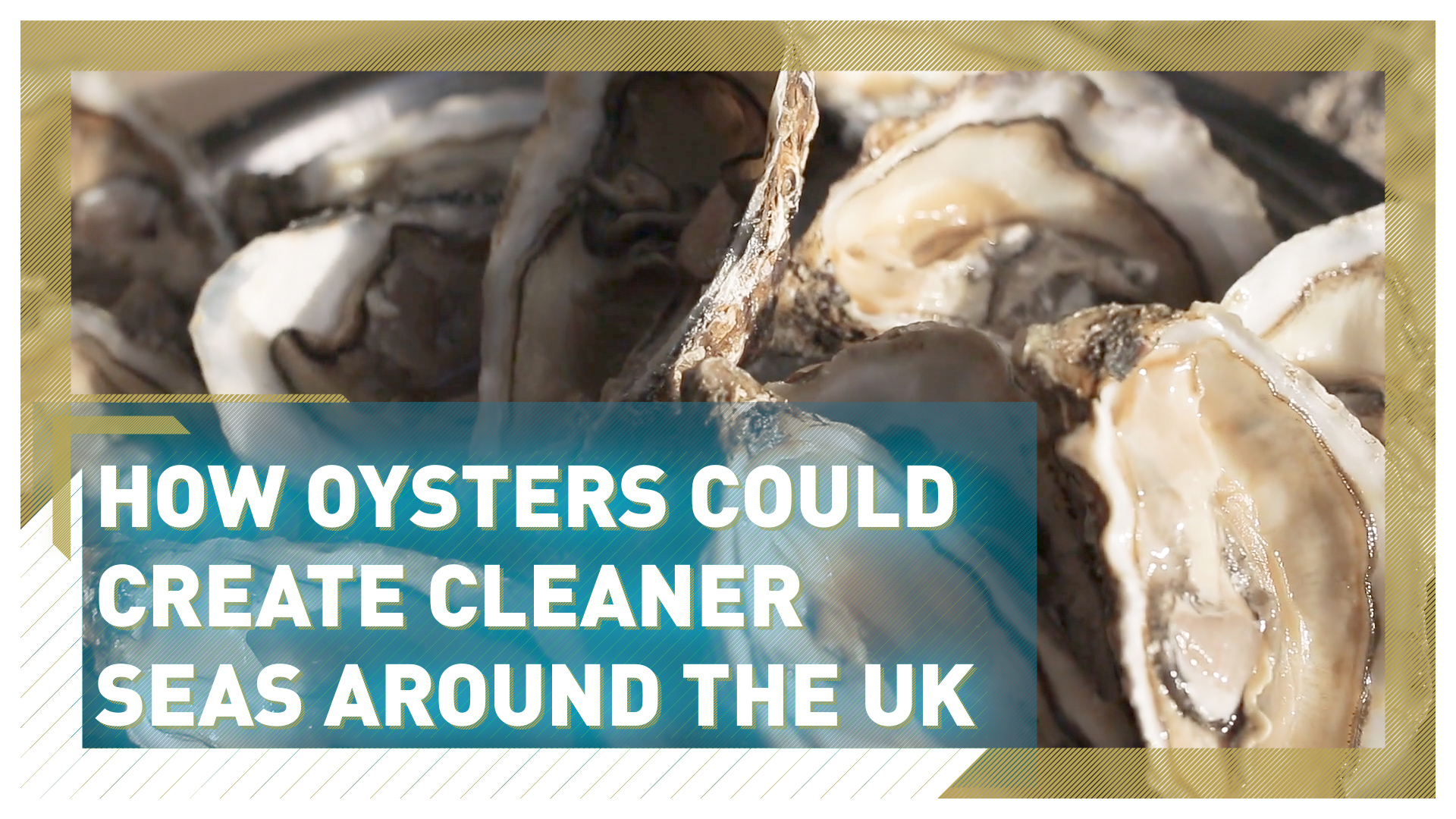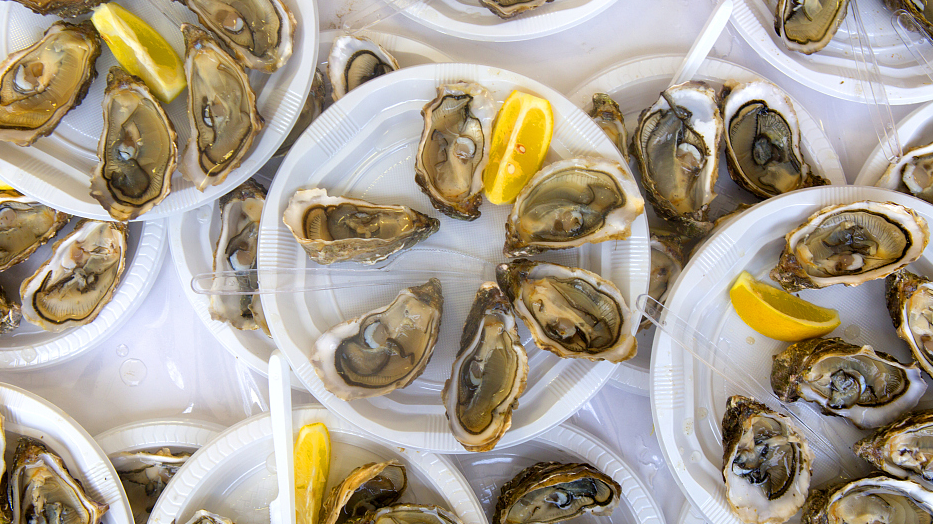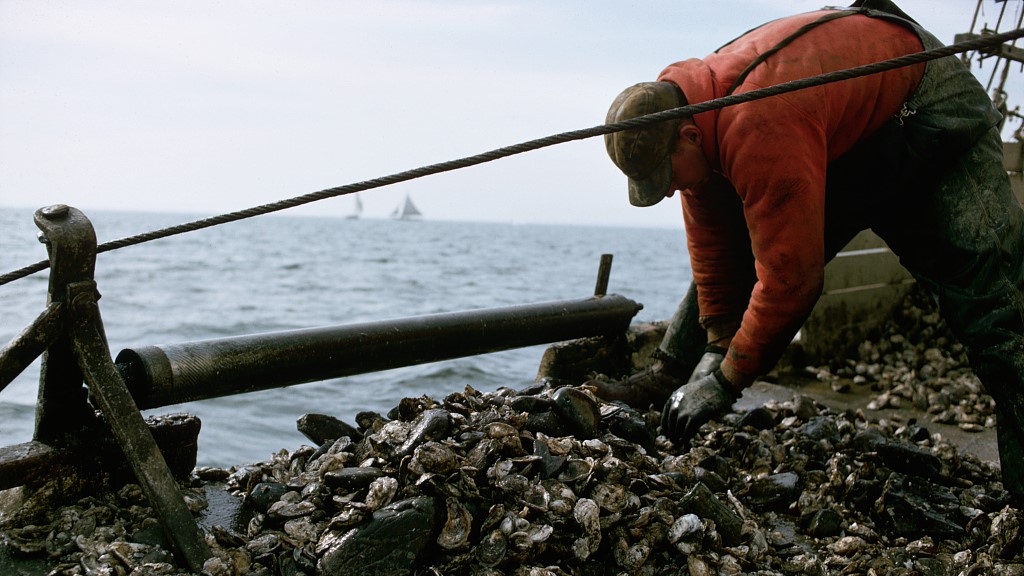03:27

On a late summer's day, leisure boats sail in and out of Lymington's harbor and a large car ferry slowly docks at the port, as it completes the crossing over the short stretch of water from the nearby Isle of Wight.
Hidden beneath the ferry port lies a little-known project, one that could quietly change the quality of the marine environment along the UK's coastline.
Dr Luke Helmer, a marine scientist from the Blue Marine Foundation, carefully hoists up a set of specially designed oyster breeding cages from under murky water by a disused ferry.
This collaboration by marine conservationists from the Zoological Society of London and the Blue Marine Foundation aims to eventually release nine billion baby oysters over the next three years.
"We're putting mother oysters - so, mature oysters - into the nurseries, suspended underneath marinas and that will essentially help us release the next generation of baby oysters, on to that sea bed, a bit like an oyster maternity ward, if you like," says Celine Gamble, Wild Oyster Project Manager at the Zoological Society of London.
"One oyster of this size can actually release a million babies each year. So, having all those suspended in those oyster nurseries, they're kind of fantastic at helping us to repopulate that population that's faced such a severe decline."

Served in restaurants around the world, oyster numbers have faced a severe decline. /CFP
Served in restaurants around the world, oyster numbers have faced a severe decline. /CFP
A combination of loss of natural habitat on the seabed, over-harvesting and pollution has destroyed around 95 percent of native oysters in UK waters.
Oysters are best known as a delicacy, which is why they were a target for large-scale fishing, but their role in the marine environment is a far more important one.
"They're capable of making some huge changes in our marine environment," says Celine Gamble. "And therefore, they're recognised as eco-system engineers. A single oyster can filter around 200 liters of water per day. So, when you think of the numbers that come together to form a reef, you can see how they're capable of vastly improving our coastal water quality."
As Helmer inspects and cleans the cages, several small crabs scurry away - all of which are carefully caught and returned to the sea. A critically endangered European eel emerges from another cage. "There's a whole host of other ecosystem services that they provide to the environment, the biodiversity associated with them. In our oyster nurseries, we've actually found over 100 species associated with the oysters," he says.

Oysters naturally filter water, so restoring their population would mean cleaner seas. /CFP
Oysters naturally filter water, so restoring their population would mean cleaner seas. /CFP
While restoring oysters in large numbers might seem like an impossible task, marine scientists are confident this could become reality. "Each female adult oyster can produce between one and two million larvae, so you don't need huge amounts of oysters to boost the population," says Helmer. "The problem is with the next step of actually providing them with somewhere to settle and live. Ultimately, we want self-sustaining populations. So that where the adults are reproducing on a large enough scale the larvae can then settle in the areas, and keep going without any human intervention."
Oysters are quite happy to find a home on a rock, or stone, but the next challenge for conservationists is to recreate that environment for them and to protect them. For now, these new oysters are being kept out of harm's way in conservation areas, but as they start to reproduce, the temptation could again be to harvest them from the sea bed. The hope is they will now be better protected.